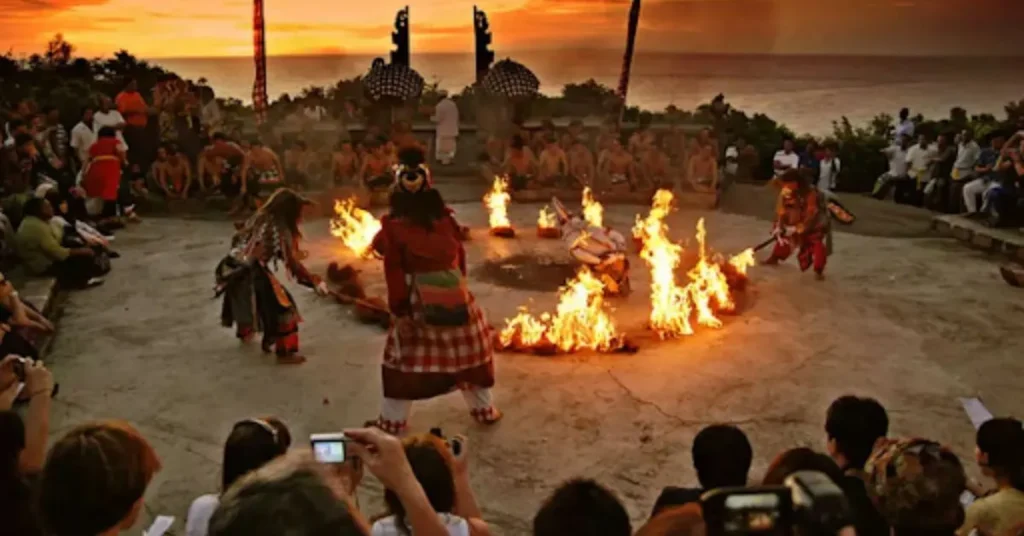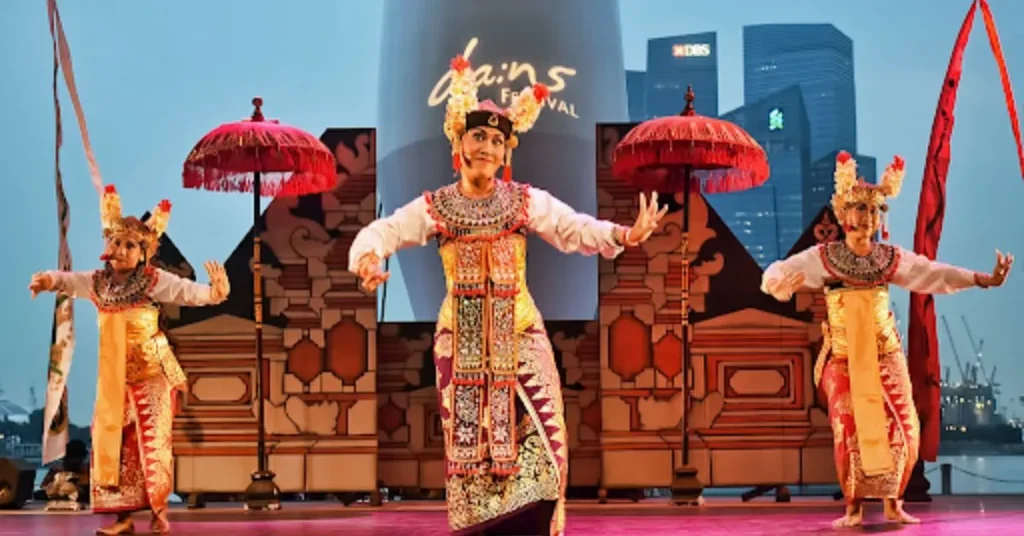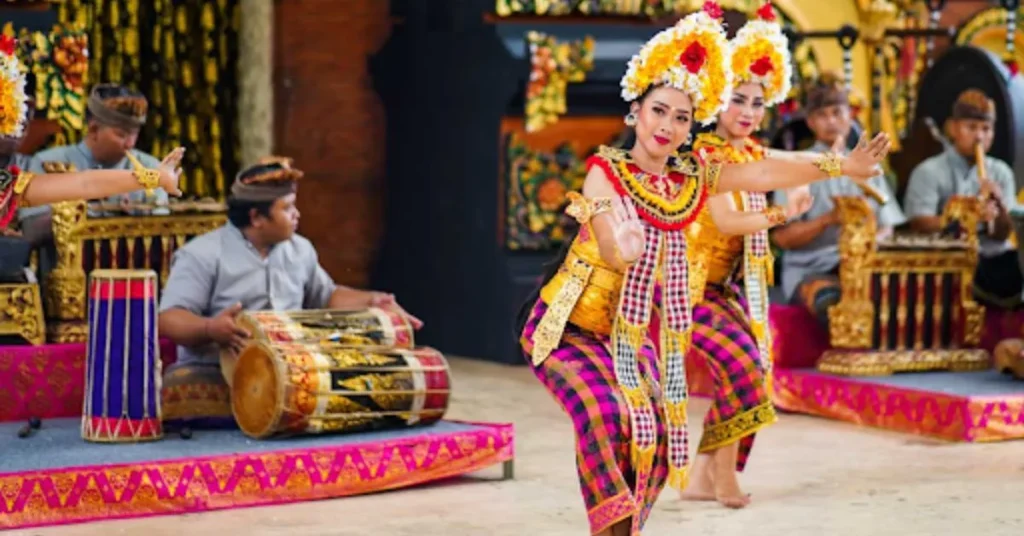As a tourist to Bali, there are a few must-to-do things like visiting Jimbaran Bay in Bali, and workshop experiences in Bali like traditional dance workshops.
Balinese dance is deeply rooted in history and is a way of expressing different emotions like grief, happiness, success, and many more. There are different traditional dance forms in Bali, and each of them has its own unique significance. If you’re a visitor to Bali Holiday Packages, and looking for a guidebook related to traditional dance forms and workshops in Bali, then this post is for you. It will provide you with different dance forms, places to attend dance workshops, and places to witness some spectacular dance in Bali.
Contents
Overview & History of Traditional Balinese Dance
From the ancient period, Bali had its own rural dance form, but it was majorly impacted in the 15th century when the Majapahit Kindom collapsed and the non-native artist went from Bali.
Then during the 15th and 19th centuries, local Balinese dancers created various new dance forms like Gambuh drama dance which is famous for being the source of most of the Balinese dance forms.
It evolved keeping all the cultural and traditional significance, and now, Bali’s dance showcases its history and mythology.
Since the 1900s, the traditional dance of Bali has become an entertainment source both for locals and tourists.
Types of Traditional Balinese Dance
1. Kecak Dance

One of the most popular dance forms in Bali, Kecak is also known as the Balinese Fire Dance.
This dance takes its inspiration from the Epic Ramayana. In this dance, bare-chested men chant “cak, cak, cak,” showcasing the art of movements and sounds without any instruments.
2. Baris Dance

Also known as the War Dance, it is performed by adult men at temples to celebrate Balinese warriors.
In the Balinese language, Baris means “line,” which represents warriors preparing for battle.
So the dance is usually performed either when there’s a ceremony related to sacrificed warriors, or during temple anniversaries to welcome gods and goddesses to bless the people.
This dance includes holding spears swords, and shields, depending on the type of Baris Dance.
It often includes groups of 8 – 40 men dressed in traditional warrior attire to dance.
3. Sanghyang Dance

This is one of the most popular and sacred dance forms in Bali which is usually performed in spiritual and sacred ceremonies.
This dance is performed by both male and female dancers and is believed that this dance has the power to keep negative energy away.
There are 3 important elements of this dance form—fire, Sang Hyang songs, and either person or doll(As a medium).
4. Sidakarya Dance

Sidakarya means “successful,” and this dance is performed to ensure the success of a sacred ceremony.
The main highlight or essential feature of this dance is a white mask, with teeth, and loose hair.
This dance has a link with Brahmana Keling, who is a powerful spiritual figure in Balinese folklore. It is believed that when he visited Bali, he was mistreated by the king of Bali. So he cursed Bali that all rituals here will not succeed ever.
Then when the king realised his mistake, the Brahaman Keling lifted his curse and was named Dalem Sidakarya.
Ever since, this dance has been performed to ensure the success of any sacred ceremony.
5. Gambuh Dance

The Ganbuh dance is the oldest drama dance in Bali and is regarded as the birthplace of all other Balinese dance forms.
This dance was created in the 15th century when the Majapahit Kingdom collapsed. After that Balinese dancers mixed different dance forms and innovated the Gambuh Dance, and started performing it in various ceremonies.
Places for Traditional Dance Workshops in Bali
1. Puri Agung Dempasar
If you want to have workshop experiences in Bali, then this is the perfect place for you to learn some of the best dance forms from experienced teachers.
Since 2013, they have been teaching Balinese dance, starting with basic dance moves to advance.
In this studio, girls can learn the famous Legong dance, while boys can learn the Baris dance.
As a visitor, you have the opportunity to attend their traditional Balinese workshops, where you can not only witness the mesmerizing movements of dancers but also learn a few expressions from them.
2. Kebo Iwa Studio
This dance studio was founded in 2010 and is popular for giving some of the finest dancers and showcasing Balinese dance.
In this studio, you can learn almost every dance form irrespective of men and women.
They often organize traditional dance workshops of 120 minutes for tourists and visitors, where you can learn from experts.
Some Tips for One-Time Visitors
If you’re a tourist and don’t have time for workshop experiences in Bali, then here are some locations for you where you can witness some amazing and traditional dance in Bali.
On Sundays, Tuesdays, and Thursdays between 7 pm and 9 pm, the Legong dance is performed at the Ubud Royal Palace.
On Mondays, the Kecak Ramayana Dance is performed at Pura Dalem Ubud at around 7 – 9 pm.
Same for, Wednesdays, Fridays, and Saturdays Frog dance at Padang Tegal Kelod, Barong dance at Ubud Arma Museum, and Satya Brastha dance at Ubud Arma Museum. All between 7 pm – 9 pm.
On some special days like the full moon or new moon, the Kecak dance is performed at Ubud Arma Museum.
So as a visitor, you can choose between any of them, depending on your schedule to witness traditional dance in Bali
Conclusion:
Having workshop experiences in Bali like traditional dance workshops offers you an immersive experience and allows you to learn about Balinese dance culture. As a visitor to Bali, you must attend one of these traditional dance workshops to enhance your experience.

